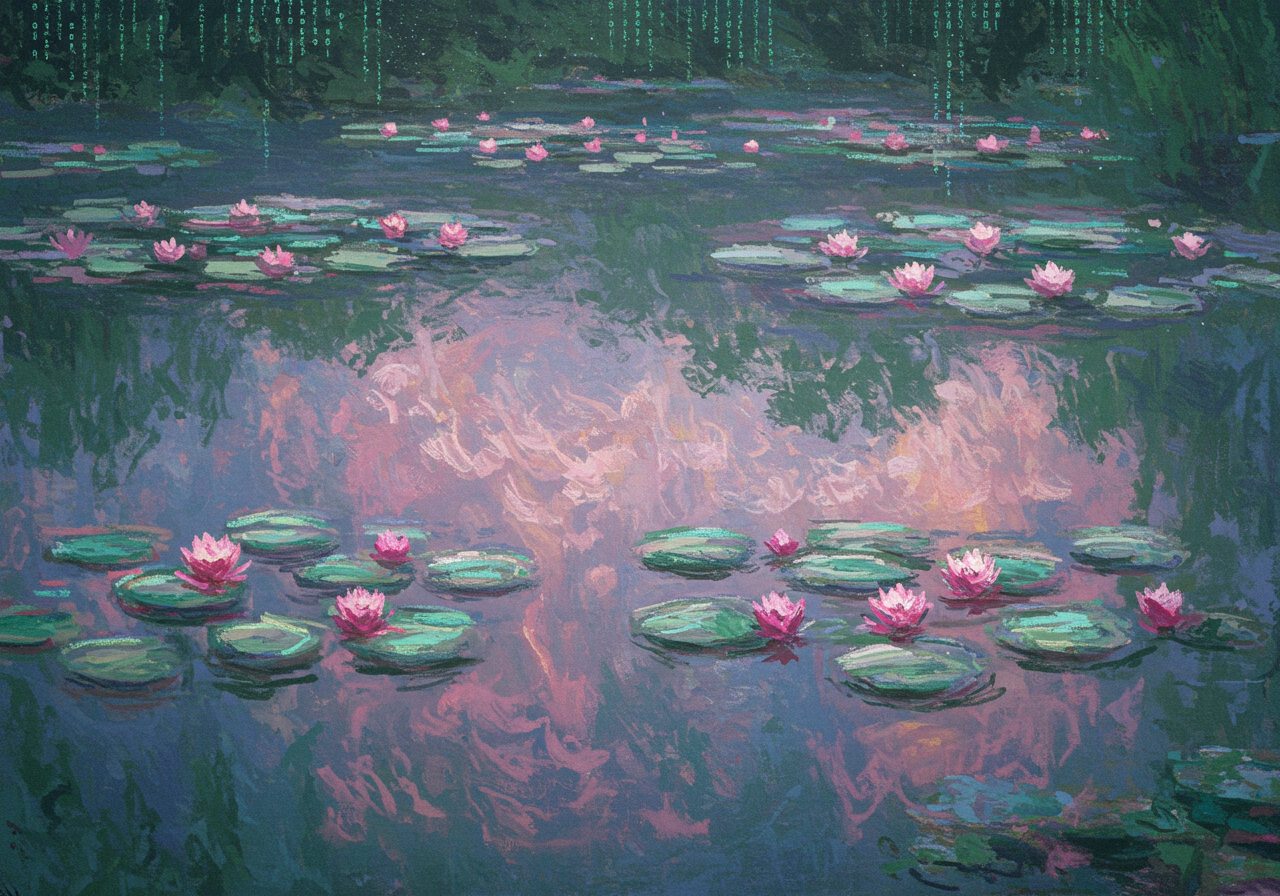AI & Art: A Silent Revolution in Creativity
One day, you gaze at a painting. Dazzling colors, a unique composition, a deep emotional resonance... But there's no signature at the bottom. Because the creator isn’t human — it’s artificial intelligence. And right there, the questions begin to stir: Is this truly a work of art? Or merely the result of algorithmic imitation?
AI is no longer just a technology for data analysis and automation; it now writes poetry, composes music, paints images. It’s becoming entangled with the fabric of art. But how does this shift affect the essence of what we call art? Art is often defined as a “unique form of expression.” An externalization of emotion, thought, and experience... But does AI possess any of these? Is feeling necessary for creation? That question doesn't just lead us to the core of art — it brings us to the essence of making itself. Must there be intent or consciousness behind a creation for it to be valid? Or is the act itself enough?
When an AI system generates a visual, chooses words, or layers music — it is performing an act. So we must ask: Can that act be considered an artistic one Maybe the real issue isn’t what AI is doing — but how we perceive it. Reality has already been blurry for years. Filtered lives on social media, the ambiguous borders of digital art, visuals valued as NFTs... And now we face a new uncertainty: “Was this created by a human, or by an algorithm?” The strange part? Sometimes, even when we know the answer — it doesn't matter. Because we are moved, because we are affected.
If a visual captures us, if a story resonates with our inner world, if a piece of music brings tears when we close our eyes — does it really matter who made it? Perhaps art exists not so much in the creator, but in the receiver. And in that moment, AI-generated creations begin to dance along that fragile line of reality. Imitation and originality, artificial and authentic, emotion and computation begin to blend. AI systems learn from vast datasets. They analyze thousands of paintings, identify patterns, absorb styles, and recombine them into something that seems new. But is that creation — or just high-resolution mimicry? Feed an AI every Van Gogh painting, and it may produce an image in his style. But behind that image, is there lived experience? Sorrow? Ecstasy? Or simply statistical arrangements of pixels? Here, we encounter the idea of intent. Human art often stems from a story, a sensation, a spark. AI operates from guided instructions. That’s why many still hesitate to label AI-generated content as “true art.” Yet, isn’t human creativity also built on learned experiences, observations, and patterns? Isn’t AI learning too? And so, we must turn the question toward ourselves: What are we doing with AI? When we create a campaign visual, write a brand story, or design a concept — we’re not just producing ideas. We’re building worlds. And we’re no longer building them alone. AI has become an extension of our imagination.
Today, we can generate dozens of variations in minutes, test thousands of color palettes, even visualize emotional shifts. This isn’t just acceleration — it’s a transformation in how we think. Advertising used to follow rigid structures: audience analysis, message optimization, visual balance… Now, intuitive creativity and algorithmic foresight coexist. AI is no longer just a tool — it’s a creative partner.And perhaps the most thrilling part is this:
AI isn’t an artist — but we can make art with it.
AI isn’t a marketer — but we can capture attention through it.
This partnership isn’t about producing more — it’s about the first true creative convergence of human and digital intelligence.
This is a silent revolution.
Perhaps not everyone sees it yet, but we — we're already in the middle of it.
Together.













